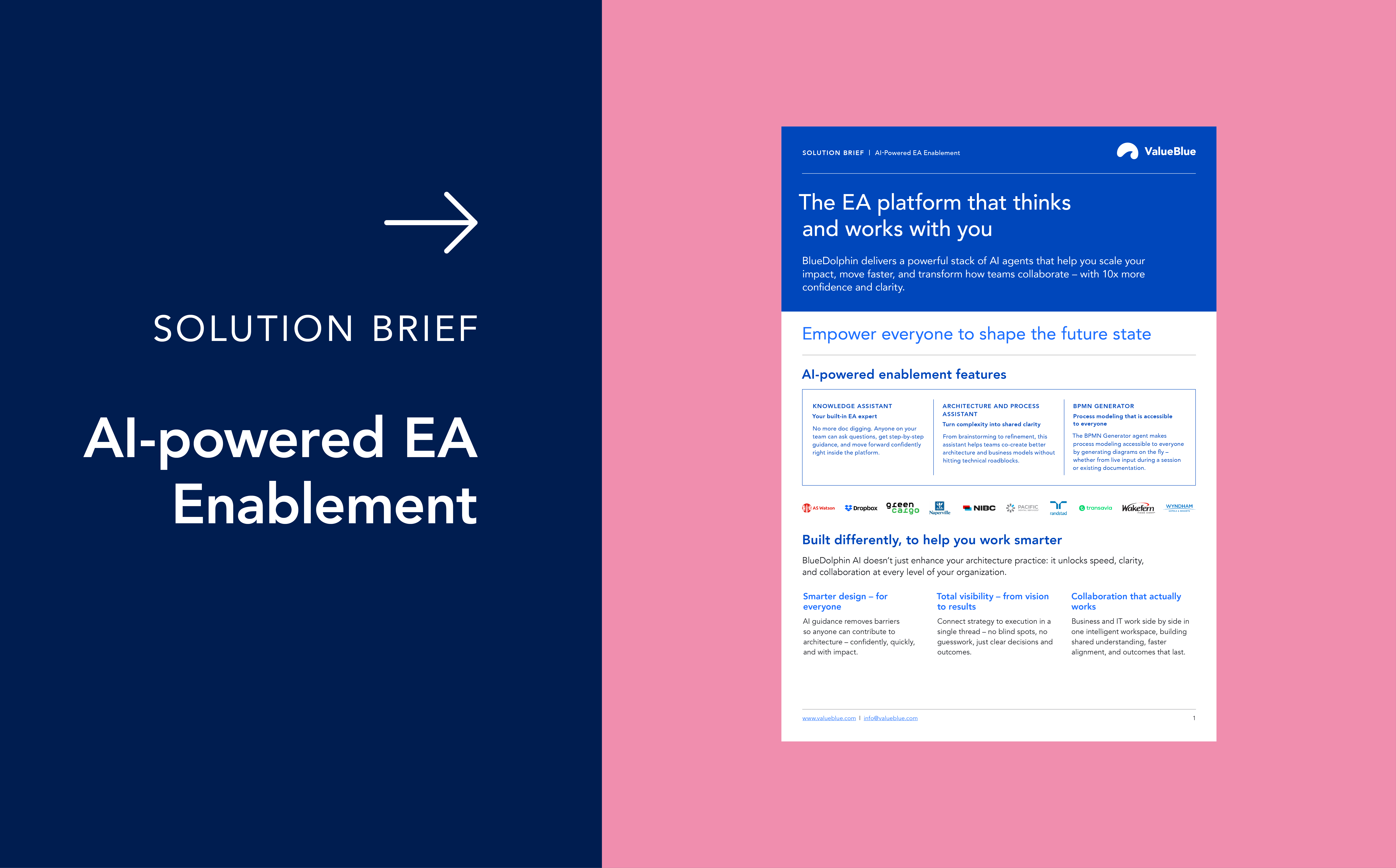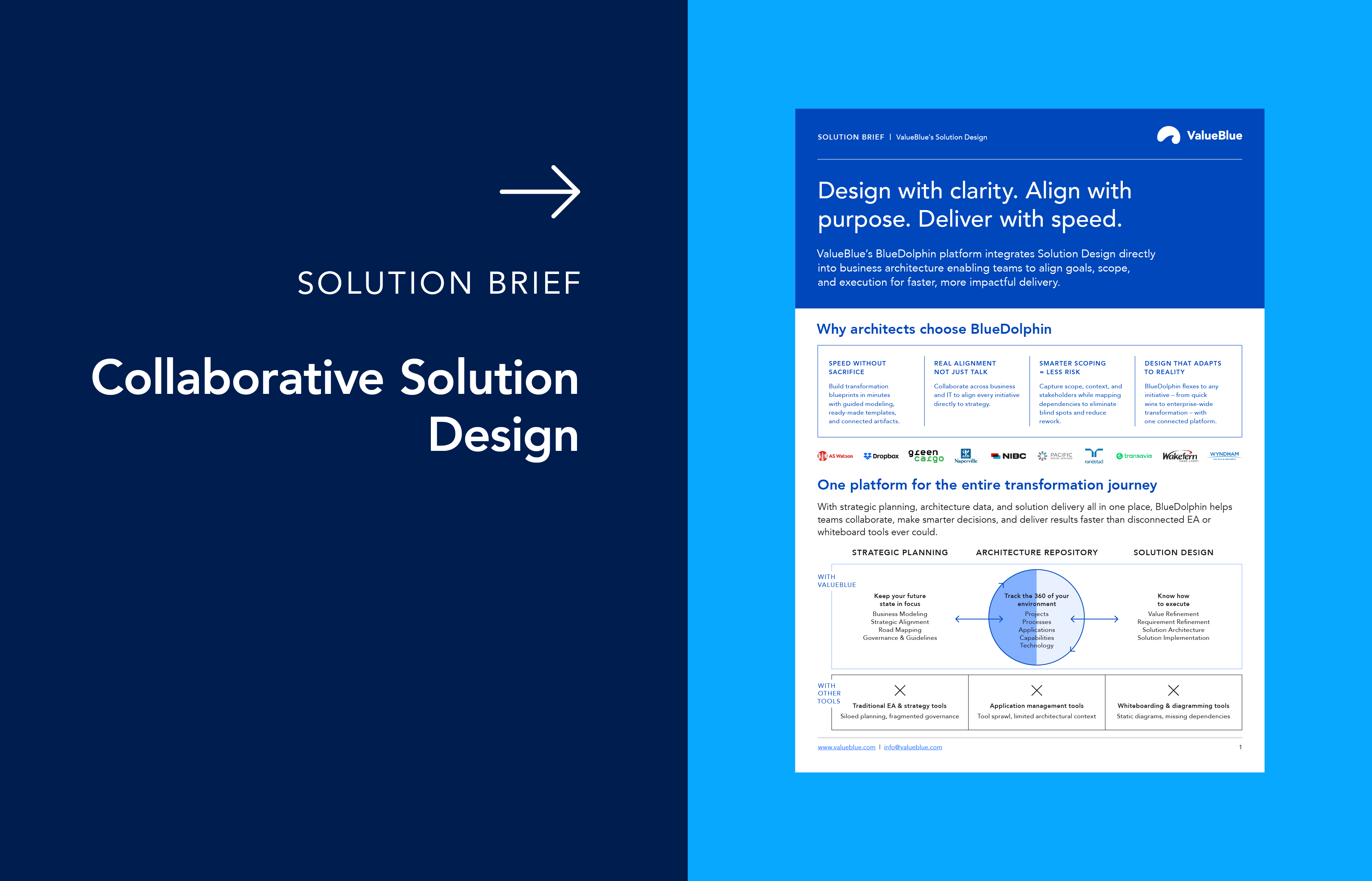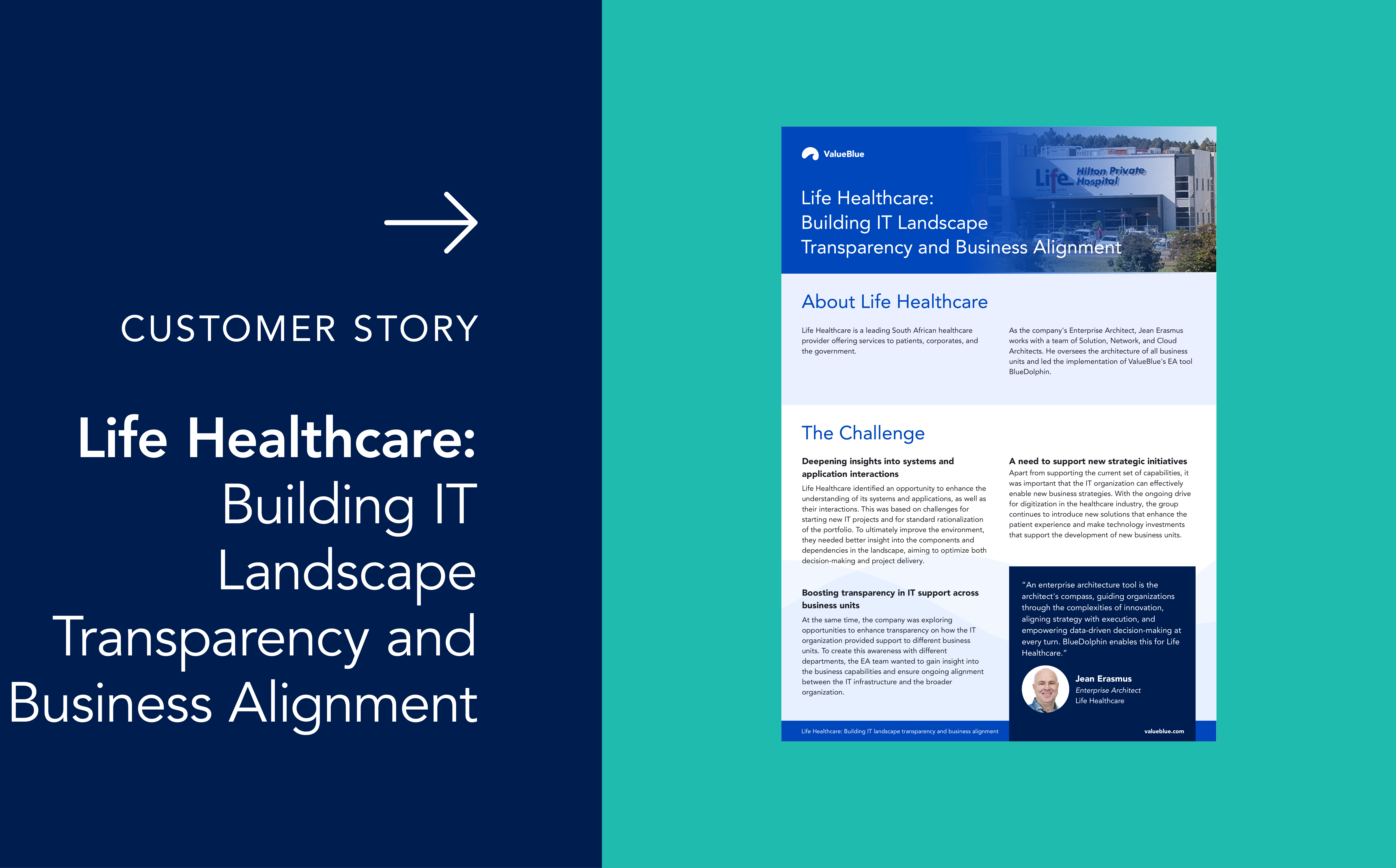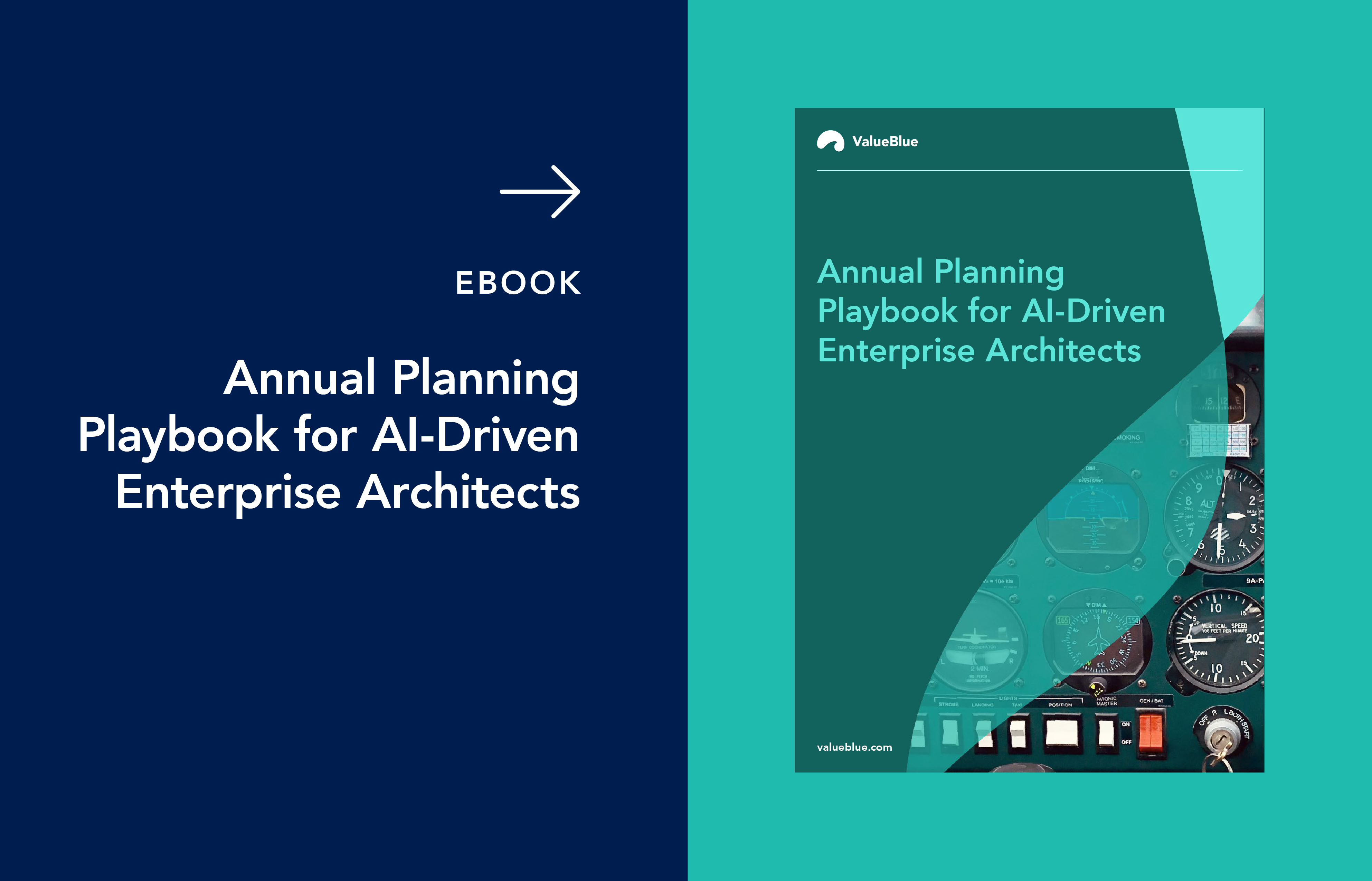What Enterprise Architects Need to Know About AI Governance
The adoption of artificial intelligence (AI) is transforming how organizations operate and how they are governed. As AI becomes part of business processes, enterprise architects must both unlock its potential and ensure it’s used responsibly and strategically.
Defined by the frameworks, policies, and processes that guide ethical and effective AI deployment, AI governance is being placed at the forefront. For enterprise architects, this means aligning AI initiatives with business objectives, regulatory requirements, and risk management practices.
In this article, we explore the role of enterprise architects in AI governance. We examine key considerations, AI governance best practices, and actionable methodologies, including advanced Enterprise Architecture modeling and management techniques that support scalable governance strategies.
What is AI governance?
AI governance is a holistic system of standards, guidelines, rules, practices, and tools that align AI technologies with an enterprise’s strategies, objectives, and values. Effective governance ensures that AI systems are transparent, accountable, fair, and reliable, mitigating risks such as bias, flawed decisions, and regulatory violations.
For enterprise architects, AI governance is not an isolated IT concern. It requires cross-functional collaboration, continuous monitoring, and a clear alignment with both business and IT strategies. As regulations and public expectations grow, enterprise architects must go beyond technical roles to ensure AI is used responsibly.
The role of enterprise architects in AI governance
Enterprise architects have traditionally been seen as the enforcers of IT governance. However, their role is evolving: they now lead innovation, transformation, and strategic alignment. With their oversight across systems, data, processes, and business strategy, enterprise architects are uniquely positioned to:
- Model AI agents and their roles within business ecosystems.
- Connect AI investments to strategic business objectives.
- Establish and maintain governance frameworks for responsible AI deployment.
- Ensure compliance with evolving regulations and ethical standards.
- Enable transparency and accountability across the AI lifecycle.
This shift from “IT cop” to strategic advisor is essential for organizations aiming to leverage AI’s transformative potential while managing risks and maintaining trust.
Turn AI disruption into your competitive advantage!
your competitive advantage!
Download our free eBook and learn:
- What roles will disappear, and which will define the future workforce.
- How AI accelerates business transformation across industries.
- Why Enterprise Architecture is critical to strategic planning and success.
- Practical steps to future-proof your organization and stay ahead of competitors.
Key principles of AI governance for enterprise architects
An AI governance framework is built on several foundational principles:
1. Transparency
AI systems must be explainable. This means documenting how models are trained, what data sources are used, and how decisions are made. Transparency allows auditors, regulators, and end-users to understand and trust AI outputs. Enterprise architects should ensure that architectural models capture these data flows and dependencies, providing a clear view of how AI integrates with broader business processes.
2. Accountability
Human oversight is critical at every stage of the AI lifecycle. Clear lines of responsibility and ownership should be established, often through roles such as AI officers or cross-functional governance boards. Enterprise architects facilitate this by defining and modeling roles, responsibilities, and escalation paths within the architecture.
3. Fairness and reliability
AI systems must be regularly tested for bias and accuracy. Governance frameworks should include mechanisms for continuous monitoring, bias detection, and remediation. Enterprise architects play a key role by ensuring that policies, principles, and guidelines are embedded in solution designs and that violations are detected and addressed early.
4. Data governance and security
Given that AI often processes sensitive and personal data, strict controls must be in place for data collection, storage, usage, and sharing. Enterprise architects should design architectures that support robust data governance, including identity-aware, role-based access, and Zero Trust principles to protect AI models and data from adversarial threats.
Modeling and managing AI initiatives
Modern Enterprise Architecture (EA) platforms provide powerful capabilities for modeling, managing, and governing AI across the organization.
Modeling AI agents as business actors
AI agents, which perform tasks traditionally handled by humans, should be represented in architectural models as business roles or actors. This approach reflects the operational reality and allows organizations to:
- Visualize the impact of AI on business processes.
- Assess dependencies and data flows.
- Identify areas where AI introduces new risks or opportunities.
Aligning AI with strategic business objectives
Architects should leverage frameworks that connect AI implementations to business goals using motivation elements such as goals, principles, and drivers. This ensures that AI investments are not siloed technical projects but are directly linked to measurable business outcomes.
Establishing governance for responsible AI deployment
A strategic approach to AI governance involves:
- Documenting how AI supports strategic priorities.
- Creating metrics to measure AI’s business impact.
- Developing risk management approaches for AI implementation.
Enterprise architects can use architecture modeling tools to capture these elements and provide a single source of truth for all stakeholders.
Continuous monitoring and scenario analysis
AI governance is not a one-time effort. Continuous monitoring is essential to detect biases, ensure accuracy, and adapt to new regulations. Advanced architecture platforms can automate the identification of policy violations, generate structured reports, and support scenario analysis for transformation projects. This enables enterprise architects to present alternative solutions and guide.
Organizational structures for effective AI governance
Effective AI governance requires a well-defined organizational structure. This typically includes:
- An executive AI governance office or committee.
- Cross-functional teams involving enterprise architects, domain experts, data scientists, and business leaders.
- Clear roles and responsibilities for AI development, deployment, and monitoring.
Enterprise architects are central to this structure, bridging the gap between business and technology, and ensuring that governance practices are consistently applied across the organization.
Balancing innovation and oversight
One of the main challenges in AI governance is balancing the need for innovation with the requirements for oversight and control. Overly strict governance can restrain creativity, while inattentive oversight can lead to ethical issues and regulatory breaches. Enterprise architects must find the right balance by:
- Offering “just enough” architecture: providing guidance and guardrails without unnecessary bureaucracy.
- Enabling agile teams to innovate within a governed framework.
- Continuously updating policies and practices to reflect technological and regulatory changes.
Enterprise architect as guardian of trust
As organizations navigate the complexities of AI adoption, enterprise architects are emerging as the guardians of trust, responsible for ensuring that AI is deployed ethically, securely, and in alignment with organizational goals.
By leveraging advanced modeling and management practices, architects can document AI’s role in the business, establish robust governance frameworks, and drive continuous improvement. Their leadership is essential for building the resilient, adaptive, and trustworthy AI-enabled enterprises of the future.
ValueBlue helps enterprise architects design and govern AI initiatives with clarity, alignment, and control.
Book a demo and discover our platform today.





